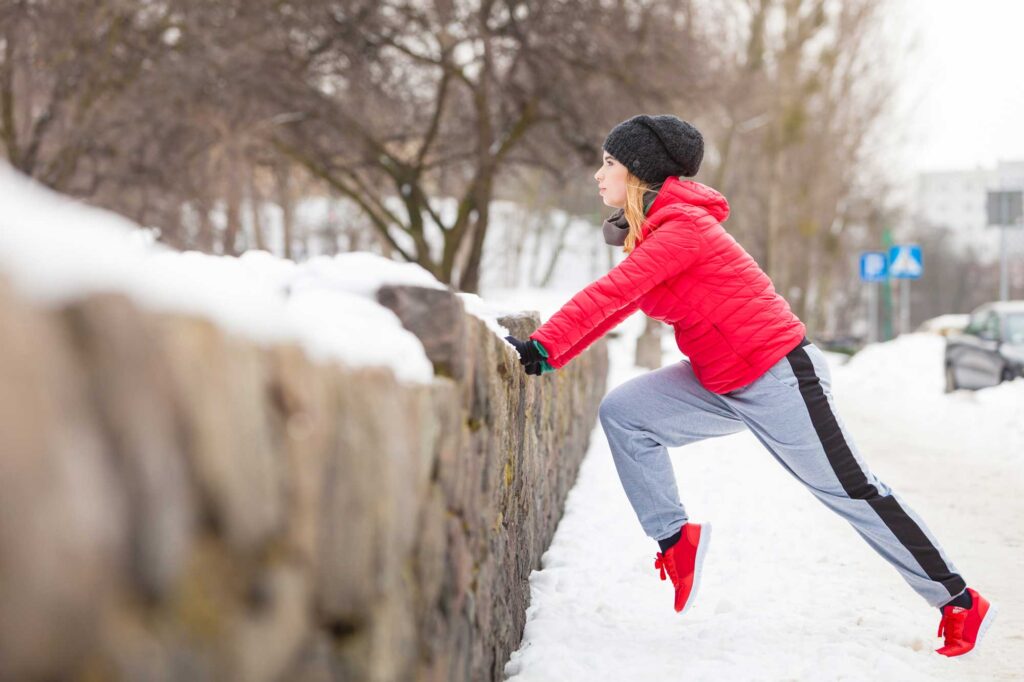In this cold season that is hopefully coming to an end shortly, many of us have favored the treadmill or other indoor equipment rather than going outside. However, regardless of the season, running is a sport that can be practiced outdoors. There are no medical contraindications as long as temperatures do not exceed -15 °C. American researchers have discovered that a winter session burns 12 to 32% more fat than the same session in hot weather since the body has to fight against the cold. There are a few inconveniences about winter, mainly the wind, the cold and darkness, all of which do not inspire one to get out of bed in the morning. In order to stay motivated, here are a few tips and tricks to keep in mind.
Fix yourself some objectives
First, you need to set goals. By having a goal, it is always easier to stay motivated, no matter the situation. They promote psychological factors that influence a person’s behavior such as going outside despite the very cold weather that we get. Winter is a great transitional period in training to promote physical preparation for eventual competitions. This is a great time to plan the events you want to do during the high season, whether it’s a 10km, a half-marathon, etc. It is important to be able to identify the conditions for achieving it, the timeline and the realistic objectives you set for yourself. To help you get started on your next big adventure, don’t be afraid to ask friends to come run with you or hire a personal trainer/kinesiologist.
Equipment
Your equipment must be adapted to the conditions you will have to face and should not be overlooked. To fight against the cold, it’s essential you protect your extremities like your ears, hands, and feet to limit heat loss. For the upper body, cotton should ideally be avoided. Wear breathable clothing to create a thermal barrier. There is a 3-layer principle consisting of first putting a polyester layer directly on the skin to wick away perspiration and keep your body dry, a second insulating layer to keep the heat close to the body and insulate you from the cold, and a third protective layer to protect you from wind, rain, and snow. One more thing, make yourself visible with reflective strips. For the legs, tights made of polyester are ideal. It evacuates heat and keeps the muscles at a good temperature. As for the shoes, if you plan to run on snow, we recommend that you have small studs. Otherwise, you can wear the same shoes summer and winter. To avoid blisters, only wear one pair of socks.
Hydrate, hydrate, hydrate
This is one thing that is constantly said, but it is always best to stay well hydrated throughout the day. It is recommended to drink approximately 2.2 liters of water for women and 3 liters of water per day for men. At moderate temperature, the body loses an average of 2 liters of body water per day. Since our bodies are composed of 60-70% water, depending on the morphology, we must replace it. In hot weather and during physical activity, the body will lose more fluids through perspiration, so extra fluids should be consumed to avoid dehydration. In cold weather, the feeling of thirst is also less present, but we must not let ourselves be fooled, because this climate makes us consume even more calories to fight against the cold. The American College of Sports Medicine recommends drinking half a liter of water two hours before physical activity. You must make sure you drink enough to be able to replace the water lost in sweat. In the case of intense aerobic physical activity, a person can lose more than a liter in an hour in the form of sweat. If the chosen running route lasts more than an hour, it is preferable to have an isotonic drink, which aims to compensate for the water loss as well as to provide the electrolytes necessary for the effort. This includes carbohydrates, sodium, and potassium.
Conditions
In the event that the road conditions are less than ideal, it is always interesting to have a substitute occupation that allows you to go outside, but allows you to vary your training. Take the opportunity to try new sports such as cross-country skiing, downhill skiing, snowboarding, snowshoeing, skating, etc. Winter is a good time to increase your weekly training volume.
Although we live in Québec and we see four different seasons, running remains a discipline that lends itself well to each of them, you just have to be well prepared. Several easy reasons can come to your mind to avoid confrontation with the cold but tell yourself that once confronted you will experience a great sense of pride and well-being. Above all, do not hesitate to call on the services of a physical activity professional to guide you in your approach. This will increase your level of motivation, add some supervision your training, guide you throughout your goal and will be able to properly assess your needs.
On that note, good luck!
Team Kinergex






